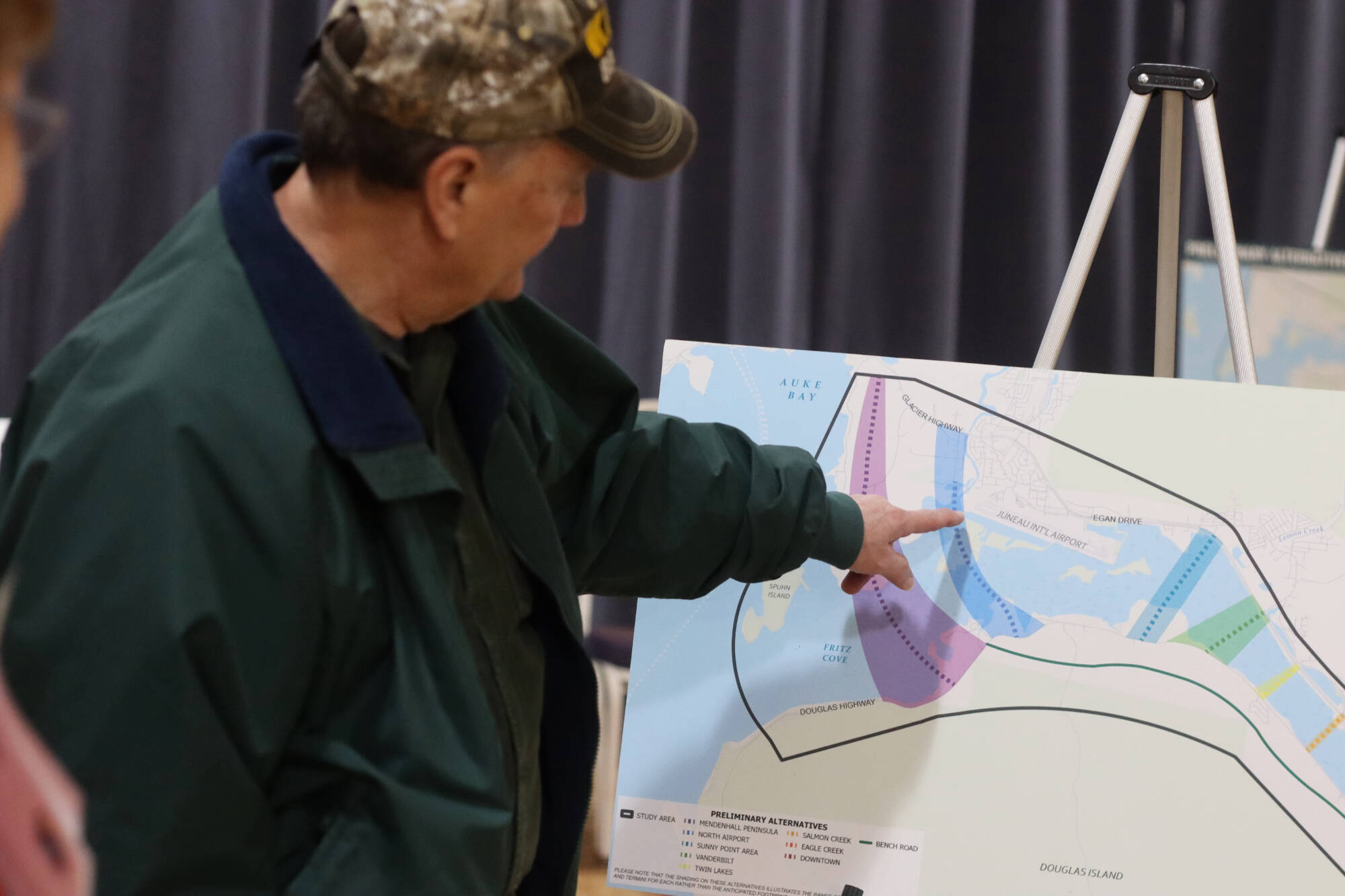The reality of a potential second crossing between Juneau and Douglas is beginning to take shape after $7 million in federal money was earmarked for the project and included in the $1.7 trillion omnibus spending package, recently signed by the president.
According to the initial request for the funding sent by the City and Borough of Juneau to the office of Sen. Lisa Murkowski, an Alaska Republican, in early 2022, the $7 million will fund Phase 1 of the crossing project which will assess the potential environmental impact and preliminary engineering for an alternative or alternatives that are recommended by the Planning and Environmental Linkages study currently underway.
[New airport, Fritz Cove sites add dimensions to second Douglas crossing]
However, according to Marie Heidemann, the project’s manager for the Alaska Department of Transportation and Public Facilities, Phase 1 won’t begin until after the PEL study is complete, which she said is expected to wrap up in around six months.
There is currently one bridge that connects Juneau’s mainland with nearby Douglas Island where more than 5,500 residents live and commute to, according to CBJ’s funding request. If developed, the crossing would open nearly 1,000 acres of city and tribal land that could go toward developing housing and improved port facilities, according to the funding requests. However, since the idea for a second crossing began to be studied in the early 1980s many residents have been divided on the topic, with opposition to the development citing environmental and fiscal impacts.
According to a 2018 survey by the McDowell Group, formerly McKinley Research Group, over three-quarters of surveyed Juneau residents supported a second crossing at North Douglas, with 37% strongly supporting the idea. A total of 14% of respondents said they opposed the idea with 4% strongly opposed.
Murkowski spokesperson Karina Borger said Tuesday afternoon in an email that the senator advocated for community-identified needs — including the CBJ-requested second crossing — throughout Alaska to be included in the spending bill.
“This process is effectively returning Alaskan taxpayer dollars back to our state in direct response to community needs — including for core infrastructure, transportation access, and economic development,” Borger said.
According to Katie Koester, director of CBJ Engineering and Public Works, the $7 million will fund one of the many steps in the long process of the project which she cautioned is still a sizable way out from beginning construction, or even design. The city had also requested an additional $7 million from the Alaska State Legislature for Phase 1.
“There are lots of steps before you’re actually building a bridge or tunnel — I think it’s momentum to the next step, but it by no means is a foregone conclusion that the project will happen,” she said. “We still have a lot of work to do, outreach to do, and a lot of opportunities as the process progresses for public participation.”
The public still has until Jan. 20 to voice comments about the more than 15 potential crossing routes outlined as options in the study, which range from developing a tunnel next to the runways at Juneau International Airport to a bridge near Fritz Cove, and another open house about the options is scheduled for spring of 2023, though an exact date and location have not yet been announced.
• Contact reporter Clarise Larson at clarise.larson@juneauempire.com or (651)-528-1807. Follow her on Twitter at @clariselarson.

